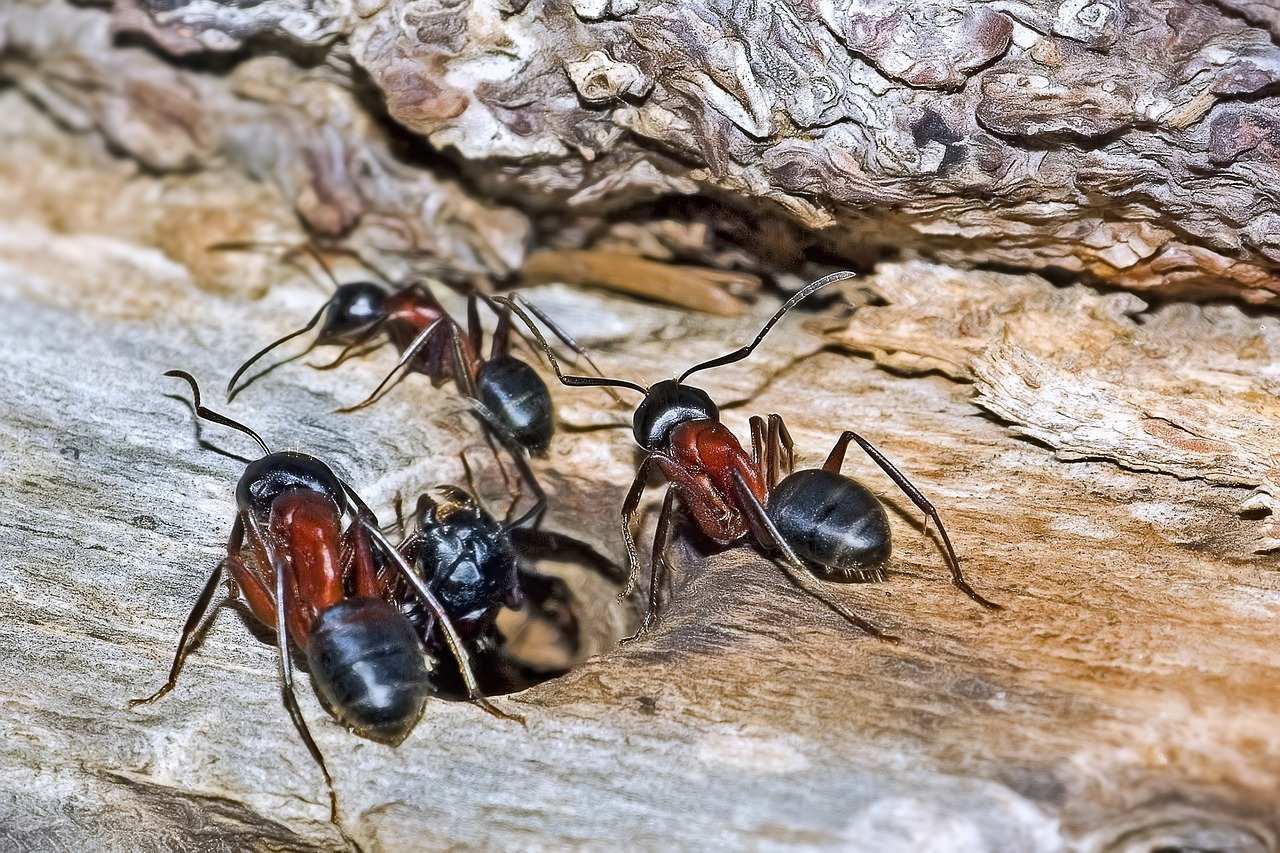Pests are invasive, carry diseases, and some even damage your homes. Unfortunately, carpenter ants fall into the latter category, along with other wood foragers, like termites.
The biggest difference between carpenter ants and termites is that ants don’t actually eat wood. Instead, they tunnel through it to build their nests and tunnels, while termites eat wood to extract the cellulose.
However, even though carpenter ants don’t eat wood, they can still destroy all kinds of things, including furniture, flooring, walls, and support beams. If an infestation is unaddressed for a long time, it can cost you significant money in repairs.
Before you leave your home liable to damage, learn the signs of a carpenter ant infestation and follow these tips to prevent carpenter ants from returning.
How to Identify Carpenter Ants
Carpenter ants look similar to other ant species, as they are large (6mm-13mm long) and have reddish and black skin. They also have circular rings of hair, large mandibles, a single pointed node, and no stinger.
Most likely, identifying carpenter ants will depend on the trail of destruction they leave, as wood shavings and damaged floorboards could all be signs of a carpenter ant infestation.
Therefore, to correctly identify and stop carpenter ants, you must learn the signs of a carpenter ant infestation.
7 Signs Of Carpenter Ant Activity
1. Finding Wood Shavings Around Your Home
Finding wood shavings or wood piles beneath wooden furniture, sheds, or exposed frame members is a telltale sign of a termite or carpenter ant problem. However, wood damage is also a sign of termites, along with other signs, such as smear marks and droppings.
Regardless, the first sign of wood shavings in your home from a pest should immediately trigger a call to your local exterminator.
2. Rustling Sounds Behind Your Walls
Carpenters ants form nests under floorboards and behind walls. Therefore, hearing small rustling sounds during the day could indicate a pest problem, though it might be difficult to pinpoint that it’s ants without further evidence.
3. Discarded Wings Near Baseboards
Swarmer ants will typically leave discarded wings near baseboards, window sills, and vents. Inspect these areas thoroughly if you suspect a carpenter ant infestation.
4. Buckling or Squeaking Floorboards
Extensive damage to wood from carpenter ants and termites can cause loose floorboards that squeak or buckle when you walk over them. However, differentiating between the two will require you to spot the pest directly.
5. Loose Doors
Similarly, carpenter ants can cause doors to loosen from their hinges. If you notice multiple doors with this problem, it might indicate an infestation.
6. Finding Ant Droppings
Small mixtures of cellulose wood and fecal matter together could be a sign of ant droppings left behind during foraging.
7. Spotting Large Black Ants in Your Home
Finally, spotting carpenter ants in your home will be the surest sign of a carpenter ant infestation. These ants typically travel in trails, so spotting these ants shouldn’t be too difficult.
Of course, we’ve seen countless incidents of homeowners with wood damage who think it’s from termites and discover it was ants all along. Unfortunately, these creatures don’t always make themselves known, mainly until extensive damage has already occurred to your home.
How to Prevent Carpenter Ants
Carpenter ants can be treated with several DIY and professional solutions, but the most effective form of carpenter ant control is to prevent it from occurring.
Here are some carpenter ant prevention tips we recommend to all of our clients:
- Remove water-damaged and decaying wood from your property.
- Store firewood in a dry area at least 30 feet away from the exterior of your home.
- Keep kitchen areas clean and cover all garbage cans with lids.
- Reduce or remove excess humidity by fixing leaky plumbing and using dehumidifiers.
- Seal all crevices and cracks.
- Install door sweeps and weatherstripping.
- Repair leaky faucets and vacuum up any standing water.
What Should You Do If You Have Carpenter Ants?
Carpenter ants can destroy homes if left untreated for a long while. So if you spot carpenter ants in your home, you should set up some DIY baits and traps to slow down the infestation and apply an insecticide to any nests you can spot.
Afterward, hire an ant control company to perform an inspection and apply any treatments to finish the task. The longer you wait, the more expensive it will be for pest control prices and to repair the damage to your home.
FAQs
Does one carpenter ant mean infestation?
Ants live in colonies which makes the presence of one ant liable to mean there are more ants around. Furthermore, carpenter ants often feed in multiple locations at once, meaning there may be more than you even realize.
What bugs are mistaken for carpenter ants?
Termites are often mistaken for carpenter ants because they manifest with the same signs as each other. However, termites look distinct from carpenter ants which are large and black as compared to termites which are smaller and reddish.
What happens if you ignore carpenter ants?
Carpenter ants can cause structural damage over time, leading to complications. While not as destructive as termites, they can damage wooden structures and furniture.


